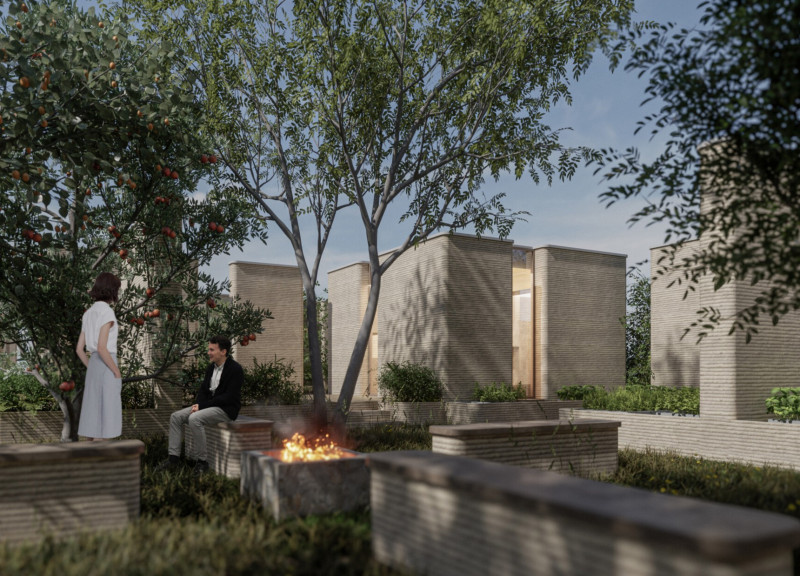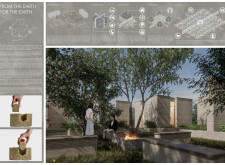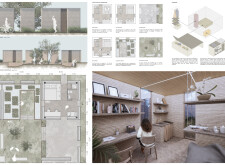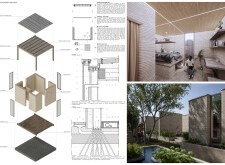5 key facts about this project
### Overview
Located in a context that emphasizes ecological responsibility, the project "From the Earth for the Earth" addresses contemporary challenges related to sustainability and self-sufficiency. It incorporates ecological architecture principles by utilizing locally sourced materials and creating a balanced coexistence between built environments and nature. The design aims to foster a micro-community that promotes social interaction while incorporating agricultural elements to enhance food security and support sustainable lifestyles.
### Spatial Configuration and User Experience
The architectural layout is centered around modular units that provide functionality and adaptability for diverse residential needs. Each module serves multiple purposes, allowing spaces to transform based on day and activity, such as living, dining, working, and cultivating. This flexible design not only accommodates the evolving dynamics of community life but also emphasizes a commitment to versatile living conditions. Integral to the spatial strategy are communal gardens and seating areas that encourage social engagement and interaction among residents, thereby reinforcing a sense of community.
### Materiality and Environmental Strategy
The project utilizes a range of sustainable materials to enhance energy efficiency and minimize ecological impact. Key materials include rammed earth for thermal mass, laminated timber beams for structural integrity, and rice husk insulation for energy conservation. Stone slab flooring adds durability, while a gravel foundation aids in drainage and supports overall structural stability.
In addition, the incorporation of advanced technologies such as 3D printing optimizes resource use during construction, fostering efficiency while creating unique aesthetic qualities. Renewable energy systems, including photovoltaic panels and rainwater harvesting technology, further illustrate the comprehensive approach to creating a self-sufficient ecosystem that addresses climate challenges and cultivates sustainable living practices.





















































